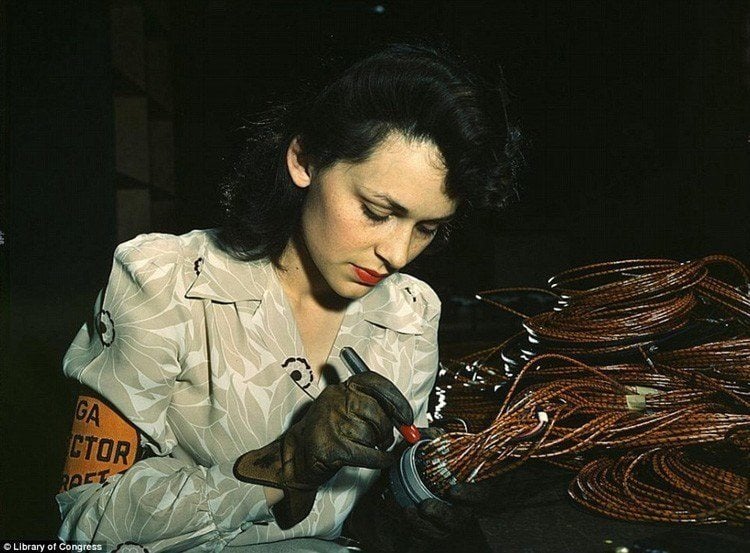
Female aircraft worker, Vega Aircraft Corporation, Burbank, California.
We recognize them from ‘Rosie the Riveter’ recruitment posters, but the female workforce of World War II provided us with much more than colorful kitsch. More than six million women joined the workforce during the war, and by 1942, the estimated proportion of jobs deemed acceptable for women shot up from roughly 29 to 85 percent.
Women rose to the occasion and carried out tasks once considered out of their “reach”, feeling that it was their duty to support their short-handed country during times of conflict. All of this, in spite of the fact that their home had done little to support or empower women in its nearly 200-year history.
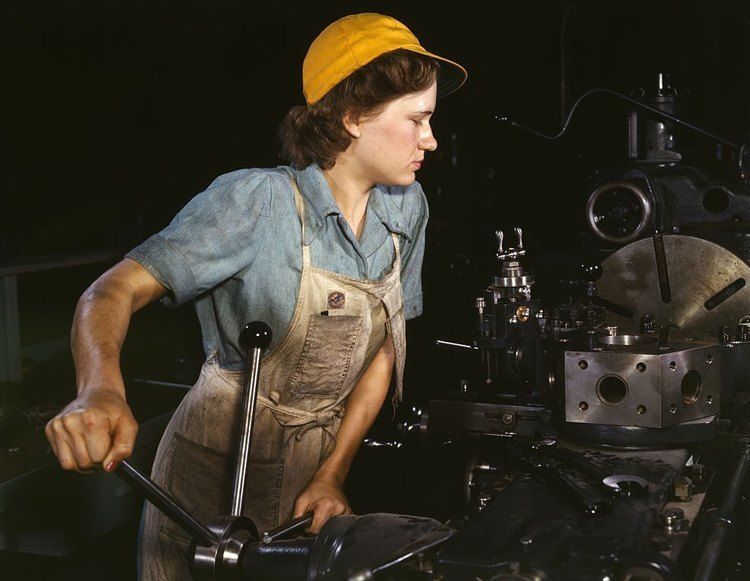
Turret lathe operator machining parts for transport planes at the Consolidated Aircraft Corporation plant, Fort Worth, Texas, USA.
Through their work these women really helped power, and win, the war. And yet, as servicemen began to return from overseas and reclaim their jobs, little changed culturally. Women were generally expected to follow male leadership, abandon the workplace and return to the home.
This did happen, and it would take until the 1970s–after a sexual revolution and the Civil Rights Act of 1964 changed the ways women were treated legally and culturally–for women to have the same workforce presence that they did during the War. These color slides from the World War II era capture these women at their finest:
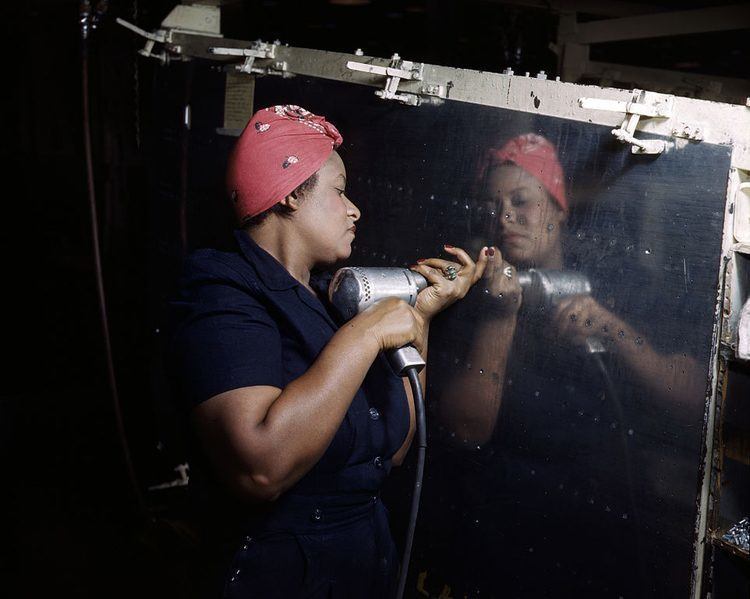
A real-life “Rosie the Riveter” operating a hand drill at Vultee-Nashville, Tennessee, working on an A-31 Vengeance dive bomber.
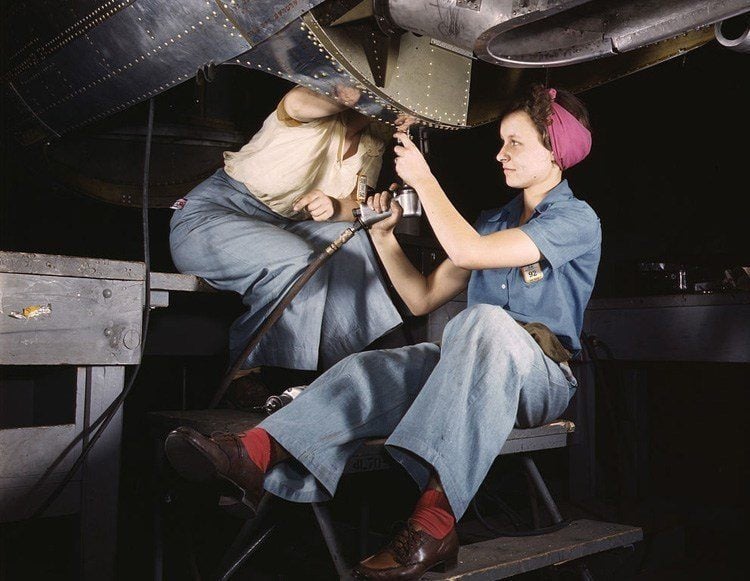
Wikipedia Women at work on bomber, Douglas Aircraft Company, Long Beach, California.
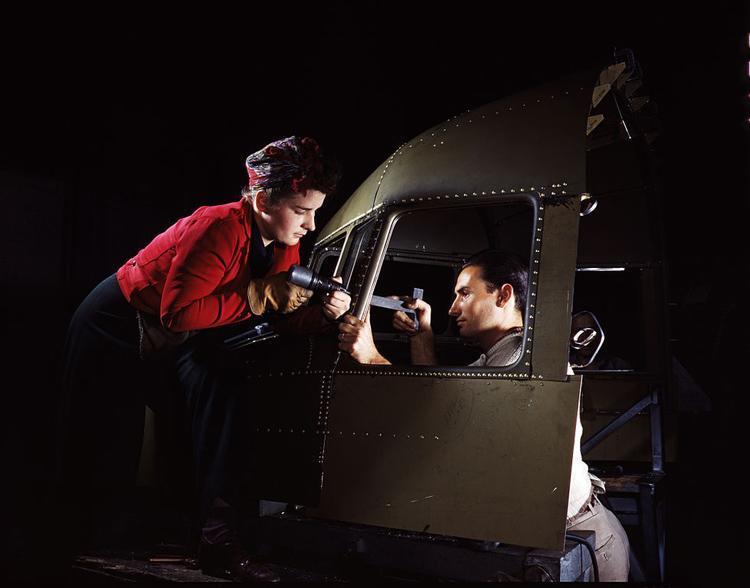
Riveting team working on the cockpit shell of a C-47 transport at the plant of North American Aviation, Inc., Inglewood, California.
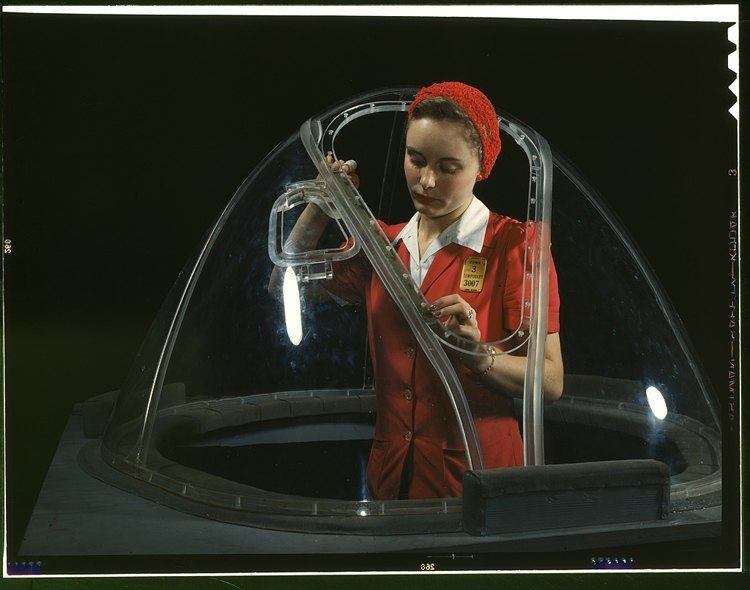
This woman in a glass house is putting finishing touches on the bombardier nose section of a B-17F navy bomber, Long Beach, California.
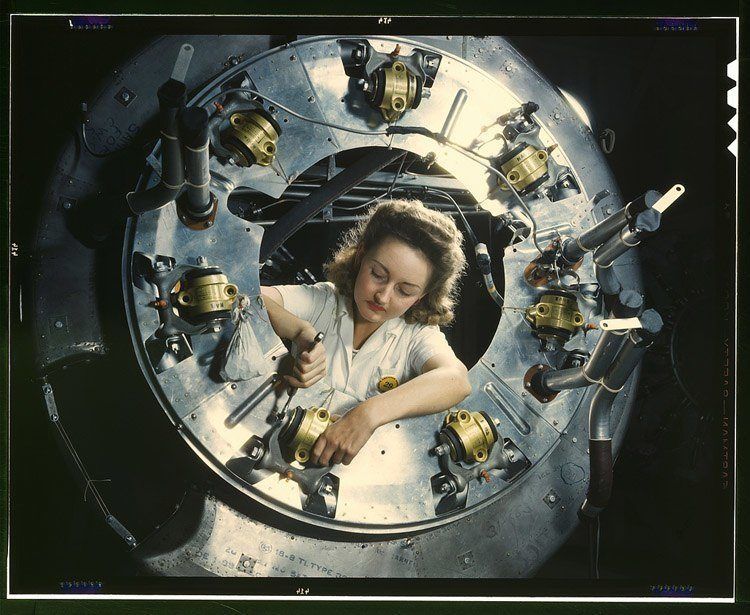
Library of Congress
Part of the cowling for one of the motors for a B-25 bomber is assembled in the engine department of North American Aviation Inc.’s Inglewood, California plant.
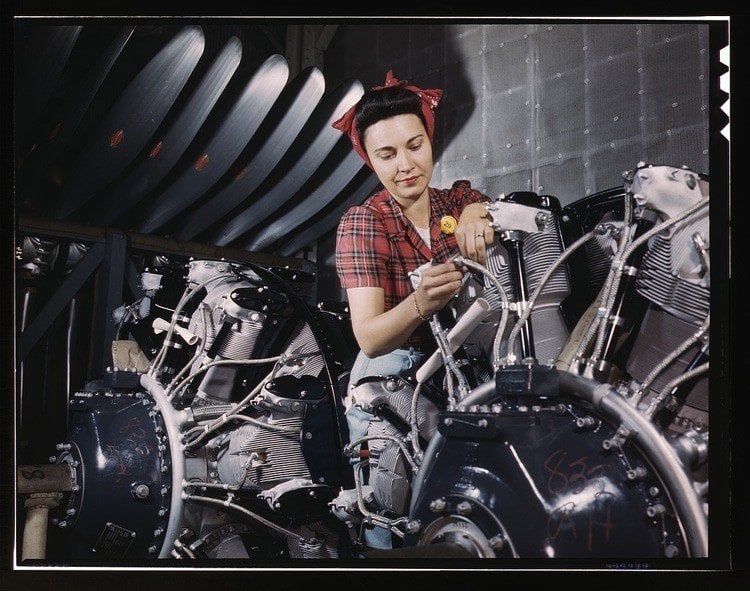
Library of Congress Woman working on an airplane motor at North American Aviation Inc. plant in California.

Library of Congress Riveter at work on Consolidated bomber, Consolidated Aircraft Corp., Fort Worth, Texas.
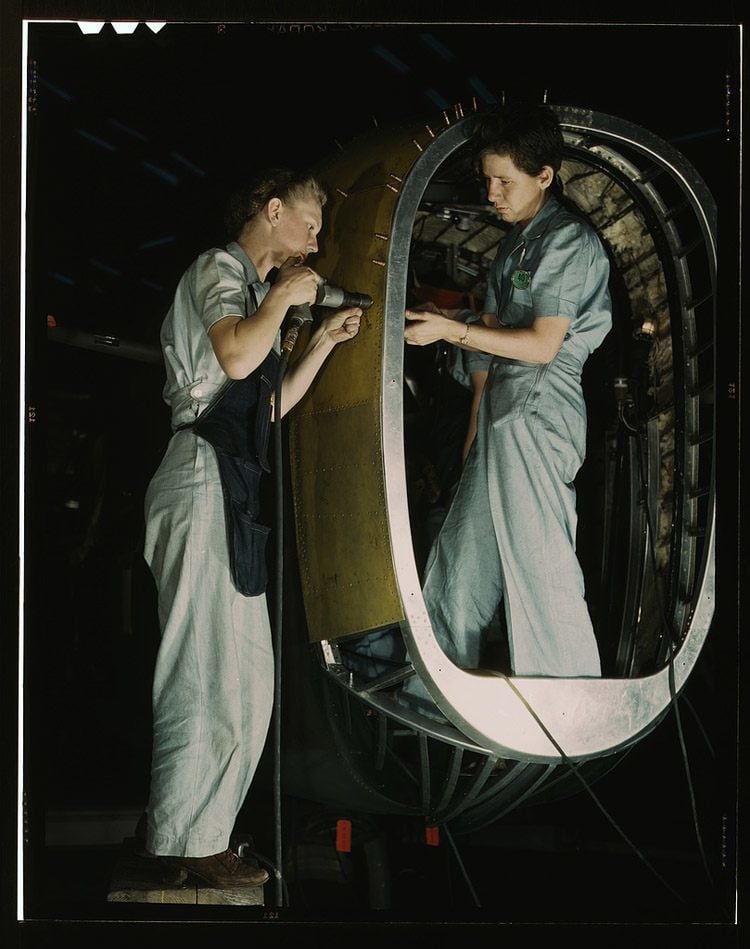
One of these women, Frances Eggleston, aged 23, came from Oklahoma and used to do office work.
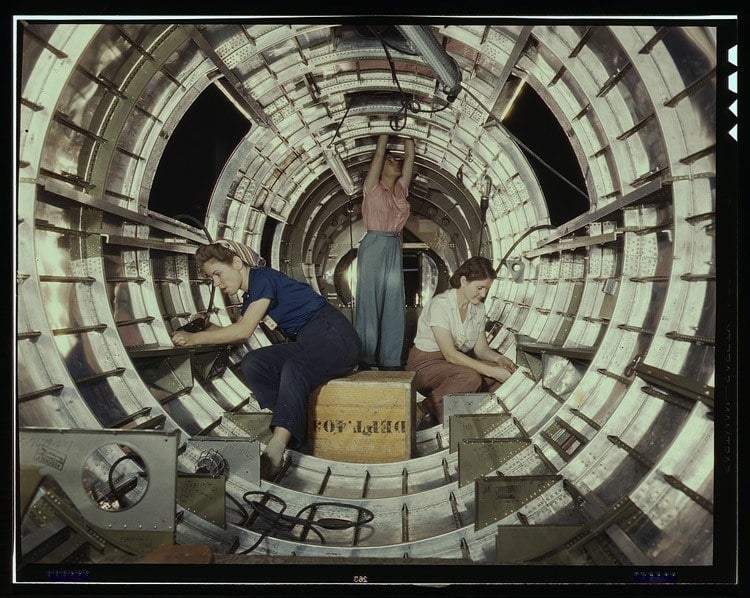
Library of Congress
Women workers install fixtures and assemblies to a tail fuselage section of a B-17 bomber at the Douglas Aircraft Company plant, Long Beach, California.
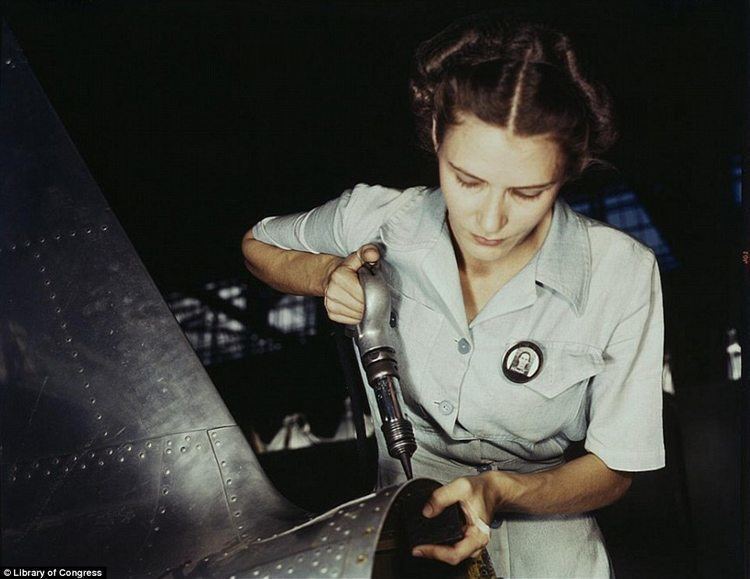
Virginia Davis rivets parts of an aircraft, Naval Air Base, Corpus Christi, Texas.
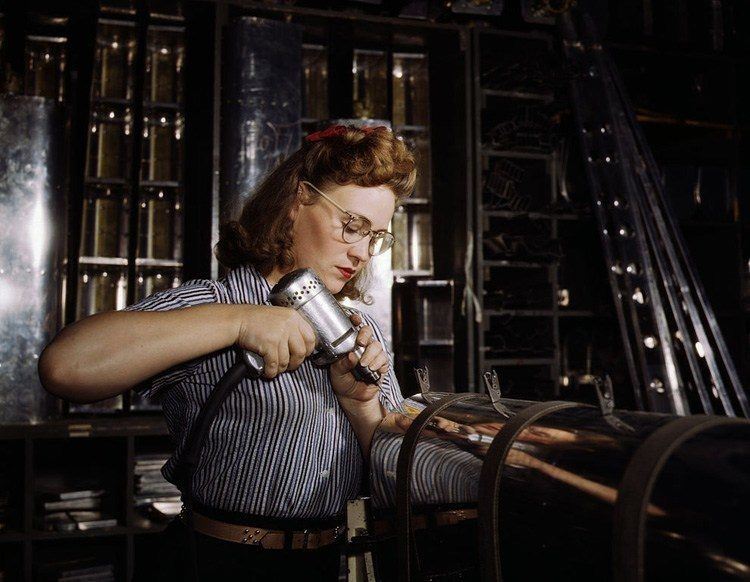
Operating a hand drill at North American Aviation, Inc, a woman is working in the control surface department assembling a section of the leading edge for the horizontal stabilizer of a plane, Inglewood, California.
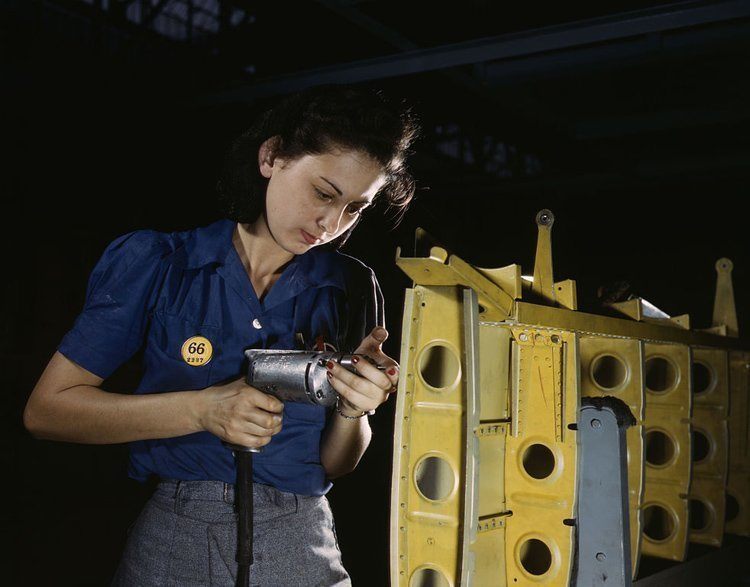
Wikimedia Commons
Operating a hand drill, this woman worker at Vultee-Nashville is shown working on the horizontal stabilizer for a Vultee “Vengeance” dive bomber, Tennessee.
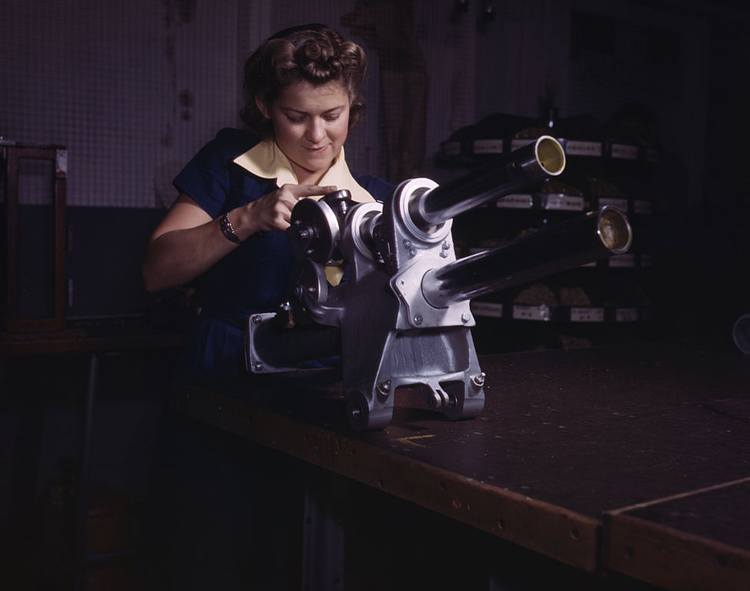
A young woman employee of North American Aviation, Incorporated working over the landing gear mechanism of a P-51 fighter plane, Inglewood, California.
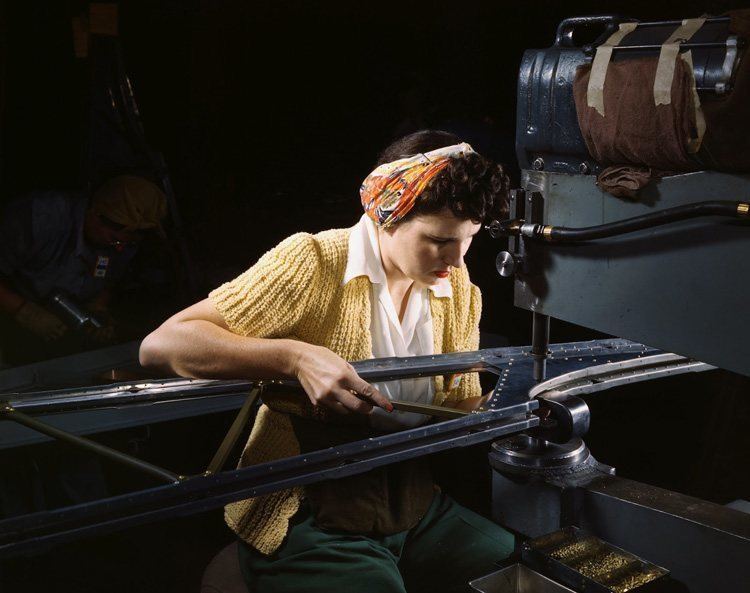
History In Photos
A young riveting machine operator works at the Douglas Aircraft Company.
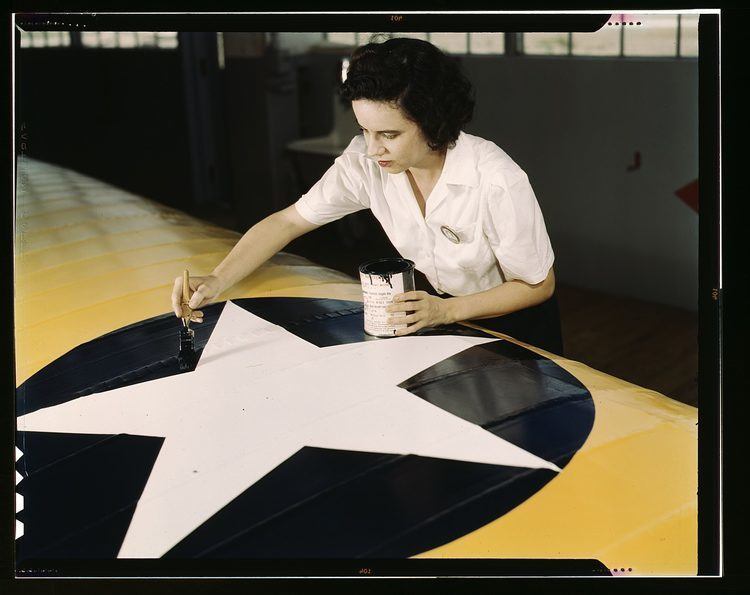
Library Of Congress
Miss Grace Weaver, a civil service worker at the Naval Air Base, paints the American insignia on repaired Navy plane wings.
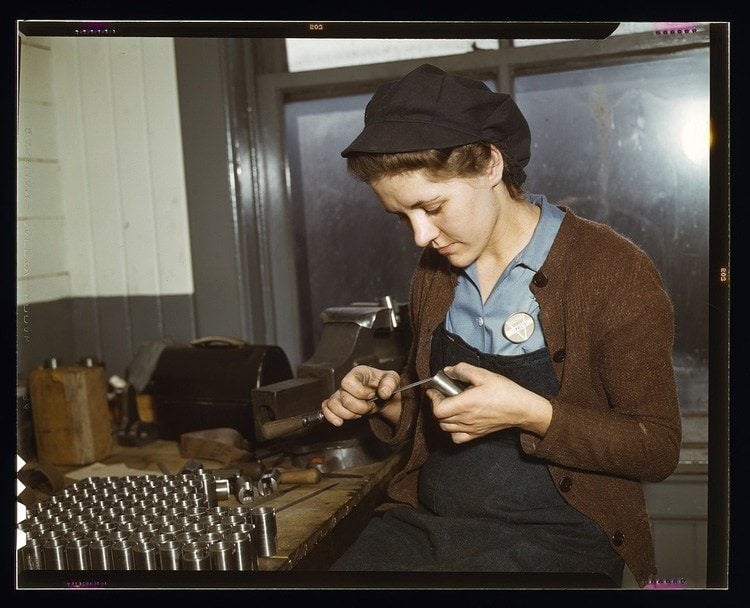
Library of Congress
A war production worker at the Vilter Manufacturing Company is shown filing small parts.
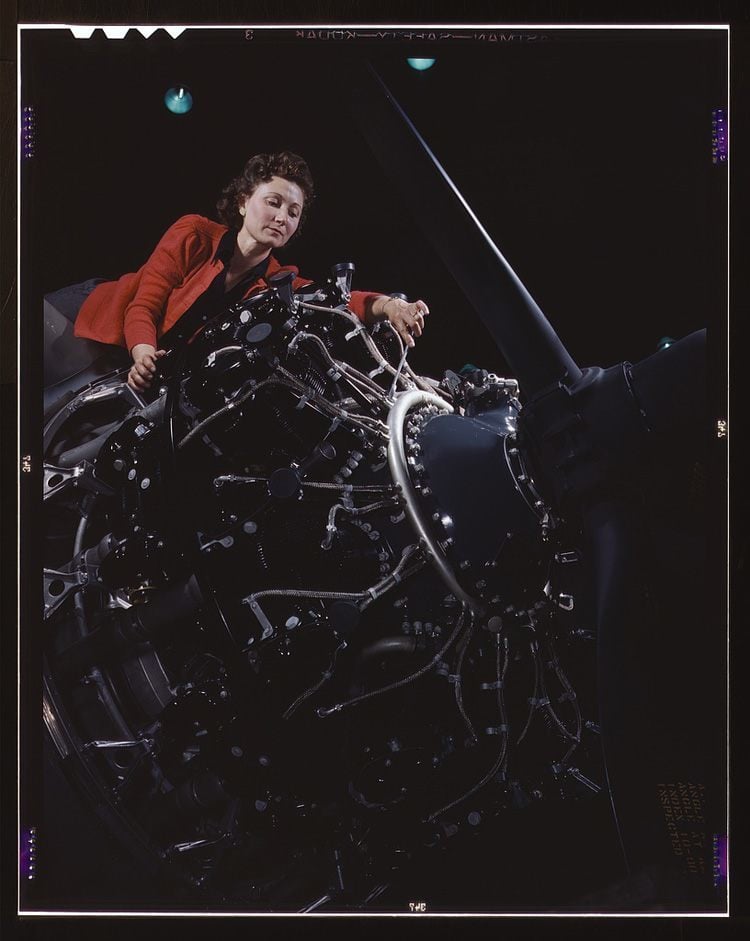
Library of Congress
Woman working on a motor at the Douglas Aircraft Company.
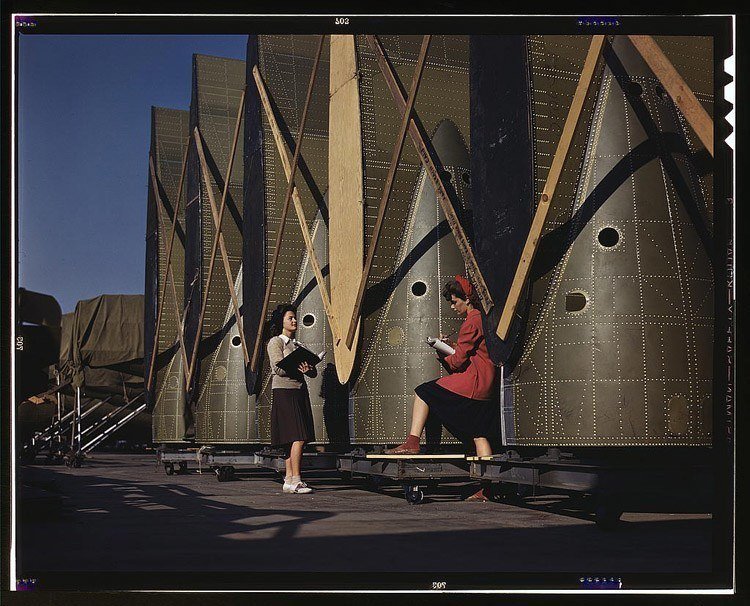
Inspectors check and inspect cargo transport inner wings before they are assembled on the fuselage, Douglas Aircraft Company.
Enjoy this fascinating look at the women of World War 2? Then be sure to see our other posts on the history of the pin-up girl and hilariously offensive vintage ads. Then, read the true story behind Rosie the Riveter. And before you go, like All That Is Interesting on Facebook.





